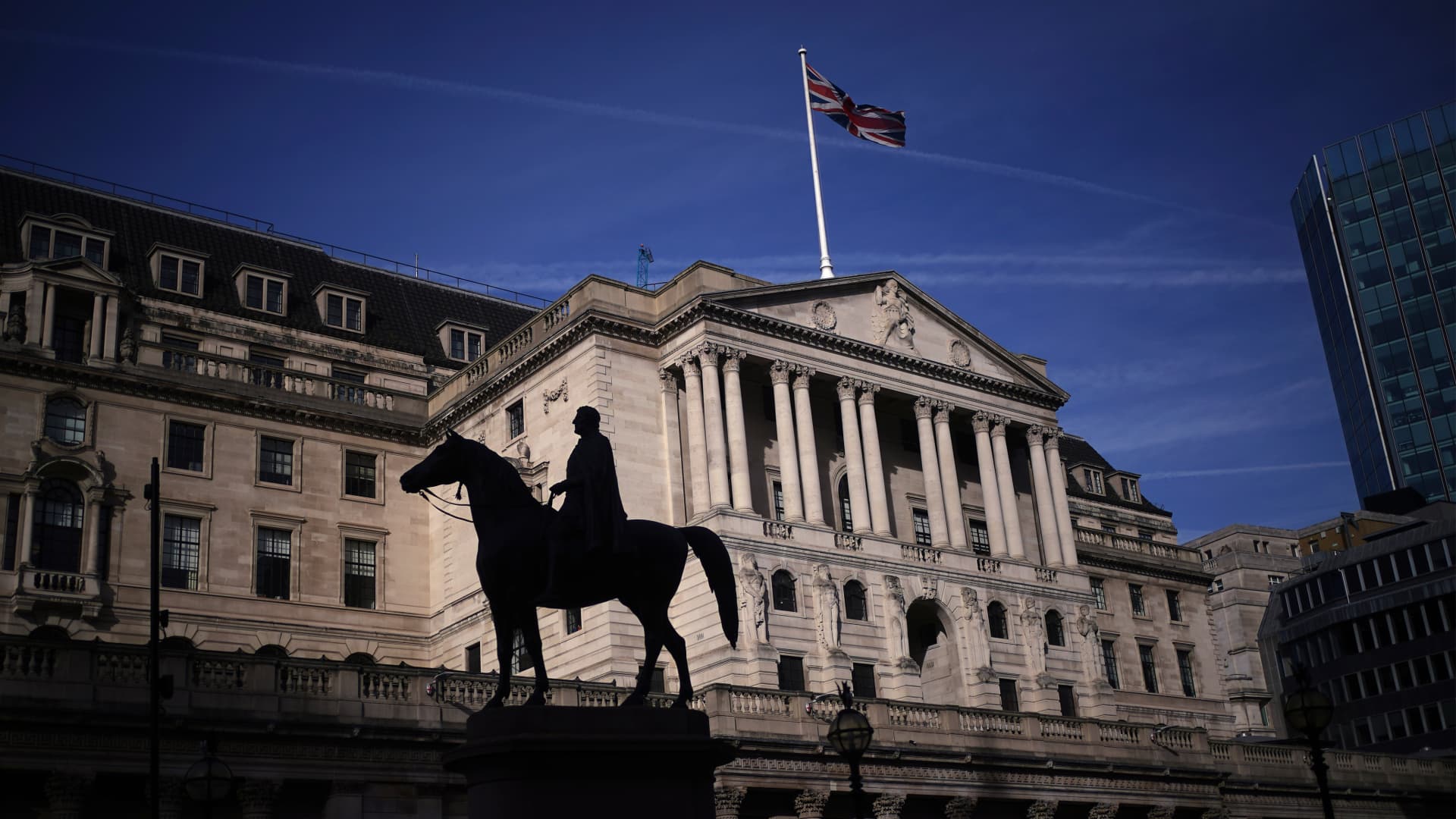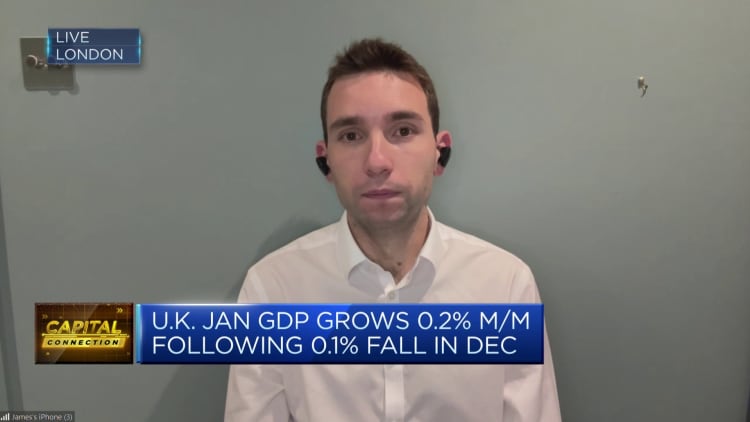
Data suggests the UK economy will slip into recession by the end of 2023, the Bank of England said in the City of London.
Mobo | Pa Images | Getty Images
LONDON – The Bank of England is widely expected to keep interest rates unchanged at 5.25% on Thursday, but economists are divided over when to cut rates for the first time.
Data on Wednesday showed that overall inflation fell more than expected in February to an annual rate of 3.4%, hitting the lowest level since September 2021. With the cap on household energy prices cut again in April, the central bank expects consumer prices to return to its 2% target in the second quarter.
Ahead of this week’s interest rate decision, both headline and core data fell more than expected, which is good news for policymakers, although the Monetary Policy Committee has so far been reluctant to provide strong guidance on the timing of the first rate cut.
The UK economy slipped into a technical recession in the final quarter of 2023 and has endured two years of stagnation after suffering a huge gas supply hit following Russia’s invasion of Ukraine. Berenberg senior economist Kallum Pickering said the central bank may want to ease policy as soon as possible to support the rapidly recovering economy.
Pickering said that given Wednesday’s inflation data, the MPC was likely to “endorse current market expectations for a first rate cut in June” and then consolidate that expectation in its latest economic forecast for May.
He added: “A further dovish adjustment at the March meeting would be in line with the trend of recent meetings, with policymakers gradually losing their hawkish bias and turning to the question of when to cut rates.”
At the February meeting, two of the nine MPC policymakers still voted to raise the central bank’s interest rate by another 25 basis points to 5.5%, while the other voted to cut interest rates by 25 basis points. Pickering said two hawks may choose to keep rates on hold this week, or one more member may support a rate cut, noting that “early moves by dissidents often signal an upcoming turning point in the central bank’s interest rate cycle.” .
Berenberg expects headline annual inflation to fall to 2% in the spring and remain close to that level for the rest of the year. The central bank is expected to cut rates by 25 basis points five times before the end of the year, taking the key rate to 4%, before cutting rates by a further 50 basis points to 3.5% in early 2025. That still means interest rates will exceed inflation for at least the next two years.
Pickering added: “Our risks tilt toward lower cuts in 2025, particularly if the economic recovery gains momentum and policymakers become concerned that strong growth could reignite wage pressures in an already tight labor market.”
Moving in the right direction, but not “going home”
A key concern for the Monetary Policy Committee is the UK’s tight labor market, which it fears could exacerbate inflationary risks in the economy.
January data released last week showed that all labor market indicators were weak, with wage growth slowing, the unemployment rate rising, and the number of job vacancies declining for the 20th consecutive month.
Santander CIB UK chief economist Victoria Clarke said that following last week’s weak labor market data, Wednesday’s inflation data further showed that inherent risks have been reduced and inflation is on the path to a sustainable return to target. the way.
“Nevertheless, since February, services inflation has largely followed the Bank of England’s forecasts and has remained elevated. We therefore do not expect the Bank to conclude that ‘it’s over’, especially given that April is a critical point for UK inflation, with the national living wage rising by almost 10% and many companies already announcing and some already implementing pay rises linked to the living wage,” Clark said in an email.

“The Bank of England needs data on exactly how much of an impact this has on pay setting, and how much is affecting price setting in the coming months.”
Santander Bank judged that the central bank may think it has seen enough data to cut interest rates in June, but Clark believes that considering the “month-by-month noise” of labor market data, a rate cut in August will be “more cautious”.
Moody’s Analytics echoed the sentiment on Wednesday, with senior economist David Muir also saying the Monetary Policy Committee needed more evidence that inflationary pressures were contained.
“Services sector inflation and wage growth in particular need to slow further. We expect this necessary easing to unfold in the first half of the year, allowing for a rate cut to be announced in August. Having said that, there is high uncertainty surrounding this year The timing and extent of rate cuts,” Muir added.




